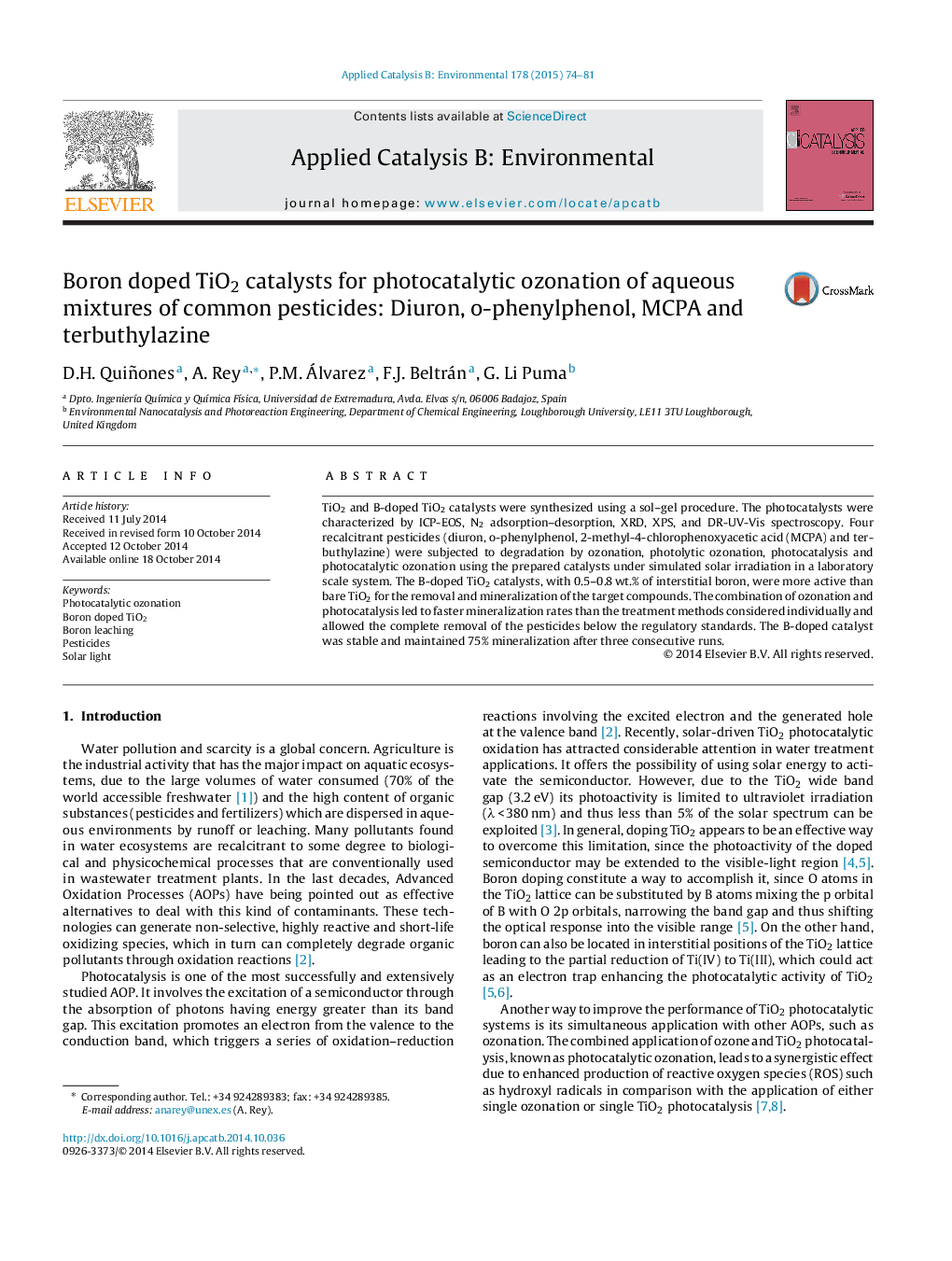| Article ID | Journal | Published Year | Pages | File Type |
|---|---|---|---|---|
| 44945 | Applied Catalysis B: Environmental | 2015 | 8 Pages |
•B-TiO2 catalysts for photocatalytic ozonation of pesticides mixture.•Leaching phenomena of non-structural boron.•Beneficial effect of interstitial B in TiO2 for photocatalytic ozonation.•Stability and high efficiency of B-TiO2 in mineralization.•Complete pesticides removal with 75% mineralization after 2 h.
TiO2 and B-doped TiO2 catalysts were synthesized using a sol–gel procedure. The photocatalysts were characterized by ICP-EOS, N2 adsorption–desorption, XRD, XPS, and DR-UV-Vis spectroscopy. Four recalcitrant pesticides (diuron, o-phenylphenol, 2-methyl-4-chlorophenoxyacetic acid (MCPA) and terbuthylazine) were subjected to degradation by ozonation, photolytic ozonation, photocatalysis and photocatalytic ozonation using the prepared catalysts under simulated solar irradiation in a laboratory scale system. The B-doped TiO2 catalysts, with 0.5–0.8 wt.% of interstitial boron, were more active than bare TiO2 for the removal and mineralization of the target compounds. The combination of ozonation and photocatalysis led to faster mineralization rates than the treatment methods considered individually and allowed the complete removal of the pesticides below the regulatory standards. The B-doped catalyst was stable and maintained 75% mineralization after three consecutive runs.
Graphical abstractFigure optionsDownload full-size imageDownload as PowerPoint slide
